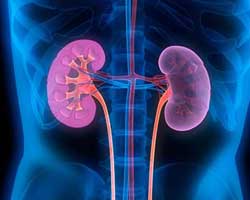
| Report Code: 40211 | Published: January 2019 | Pages: 142 | Available format: |
| Therapeutic Area(s): | Nephrology | Report Type: Competitive Landscape Reports |
IgA Nephropathy - Pipeline Overview
IgA nephropathy, also known as Berger’s disease, is a kidney disorder that occurs when IgA antibody gets settled in kidneys. This leads to inflammation that with time hinder kidney’s ability to filter waste from blood. IgA nephropathy is the key source for Glomerulonephritis, where the functional unit of the kidney, that filters blood gets inflamed.
It is an auto immune disorder caused due to the accumulation of the immunoglobulin A (IgA) which results in inflammation and further damages the glomeruli in kidney. This damage to kidney results in presence of blood and protein in urine, and over time may progress to end-stage renal disease (ESRD). It shows common symptoms that are usually observed include proteinuria (leakage of protein in urine) and hematuria (leakage of blood in urine).
IgA nephropathy does not have a specific treatment; and the treatment available only delays or prevents the ESRD. The optimal approach for the treatment of IgA nephropathy is uncertain. Yet, there are interventions that have been developed to slow the progression of symptoms of IgA nephropathy. Some of them include blood pressure control and angiotensin-converting enzyme (ACE) inhibitors or angiotensin II receptor blockers (ARBs) for IgA nephropathy patients with proteinuria. These interventions are not specific to IgA nephropathy and can show side effects, therefore various companies are looking forward to find the specific treatment effective for IgA nephropathy thus, driving the pipeline growth.
Proprietary technologies are getting used in the drug candidate development of IgA nephropathy, which enable targeted and specific delivery of drugs. For instance, Calliditas Therapeutics AB is using TARGIT drug delivery technology platform for developing its drug candidate for treating IgA nephropathy.
Furthermore, the companies involved in the pipeline are developing drugs with promising targets for the treatment of this disease. The potential targets may possibly stop or slow the progression of the disease with better efficacy and less side-effects. The continuous efforts by various companies to find better and new treatment strategies with potential targets, such as a proliferation-inducing ligand (APRIL) and B lymphocyte stimulator (BlyS), melanocortin receptors, and NF-κB signaling can also prove to be effective in IgA nephropathy treatment, since clinical trials of drug candidates meant to act on these targets have shown promising results.
IgA Nephropathy - Epidemiology Outline
The epidemiology forecast in the report provides an overview of the risk factors and trends of IgA nephropathy in seven major markets (7MM, including U.S., Japan, and EU5 [which includes Germany, France, U.K., Italy, and Spain]) and gives a ten-year forecast for the prevalent and treated cases of IgA nephropathy in each of the regions in pediatric, adult, and geriatric populations. The report stated that the total number of treated patients for IgA nephropathy is expected to be doubled by 2028 compared to 2016, mainly due to increase in the number of approved interventions for IgA nephropathy.
IgA Nephropathy- Pipeline Analysis
As of January 2019, the IgA nephropathy pipeline comprises of 24 drug candidates.
IgA Nephropathy- Competitive Landscape
Some of the key players involved in the development of the drug candidates for IgA nephropathy in the late and mid stage include Mallinckrodt plc, Calliditas Therapeutics AB, Anthera Pharmaceuticals Inc., Rigel Pharmaceuticals Inc., Merck KGaA, Retrophin Inc., and Omeros Corporation.
The report comprises of detailed pipeline analysis of IgA Nephropathy, analyzing the emerging therapies and their progress status in different phases of development. Comprehensive insights into the pipeline phase products has been provided with special focus on strategic development activities inclusive of collaboration and licensing information, drug designations, financing, grants, technological advancements, and patent. The report also contains competitive analysis and extensive information on monotherapies, combination therapies, targets and mechanism of action, and drug origin with relevance to IgA Nephropathy. It also provides epidemiology analysis of the disease in 7MM.